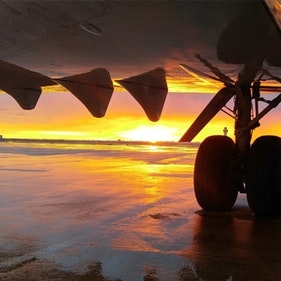This increased capacity raises many important questions in areas, such as security, sustainability, and strains on infrastructure. At the same time, technology and innovation are having a tremendous impact on customer habits and expectations, rapidly transforming how we plan, book, undertake, and evaluate our travel experiences.
This year’s WTTC summit focused on the theme “Changemakers,” looking at some of the major individuals, firms, initiatives, and governments shaping the travel and tourism industry in 2019.
Below are three insights that will have a lasting impact:
The Seamless Traveller Journey era is here.
Breakthroughs in biometric and digital identity innovation, including facial recognition technology, may be the answer to strains on security systems and processes from increases in travel and geopolitical risks. WTTC’s Seamless Traveller Journey vision is that travellers will no longer have to repeatedly present travel documents, boarding passes, and booking confirmations numerous times to multiple stakeholders at different stages of their journey. Instead, they will be able to book transportation, check-in, proceed through security, cross borders, board aircraft, collect baggage, simply by confirming their identity and booking data. This has the potential to extend to rental car agencies, hotels, cruise ship lines, and other travel providers outside the airport security environment. Upsides include improved security and the possibility to streamline and heighten customer experience.
While work still needs to be completed on Seamless Traveller’s technology platforms and other parts of the processes, the new approach is expected to increase cross-industry collaboration, efficiency, and even peace of mind, with customers’ needs being put at the forefront of future travel.
How can biometrics help the travel industry?
Technology and innovation are having a tremendous impact on customer habits and expectations, rapidly transforming how we plan, book, undertake, and evaluate our travel experiences
Cybercrime is a real threat to the industry.
The travel and tourism industry is information-centric, with success hinging upon how well data is managed and protected. As a prime target for attacks by nation states, organized crime, “professional” or young “amateur” hackers, or even industry insiders, the sector must raise the threat level of the conversation internally about the potential for cyberattacks with severe consequences. While travel is a competitive industry, attempting to tackle cybercrime in isolation can amplify the associated risks for a single enterprise. Collaboration is key for elevating the industry’s cyber resilience. Concrete actions could include threat-intelligence sharing, incident-insight collaboration, working together to promote cyber defense strategies, and the support around helping firms resume services and recover in the event of a severe attack. Preparation is key: Training, testing, and practicing must be prioritized at all levels in and across the enterprise for all kinds of cyber incident scenarios. As travel continues to innovate and create new seamless experiences, it is critical that cyber resilience is embedded in all of them.
Cyber vulnerability within travel and tourism
Sustainability must underpin industry growth.
Travel & tourism’s 3.9 percent growth in 2019 outpaced the 3.2 percent expansion of global gross domestic product, but that growth has to be built on solid, sustainable foundations. Above all, this means contributing positively to communities in which the industry operates and protecting the cultural and natural resources that attract tourists worldwide. But the promotion of sustainability is demonstrated in a variety of ways. For example, destination stewardship involves industry stakeholders investing in and helping to plan developments to ensure that an entire community benefits and the flow of new travellers does not lead to overcrowding. In addition, efforts to protect the environment, such as WTTC’s Travel & Tourism Declaration on Illegal Wildlife Trade, safeguard the preservation of local species of animals and plants. In cities, it can mean promoting mobility innovations that reduce the industry’s carbon footprint.
Confronting new challenges. Digitization, geopolitical forces, climate change, and shifting consumer preferences are redefining the current era and reshaping expectations for the industry. Consequently, organizations must radically rethink what they want to represent as well as what they do and how they do it. Within the industry, it will be these “changemakers” that will lead a positive transformation of the sector for travellers, businesses, communities – and ultimately, the planet.











